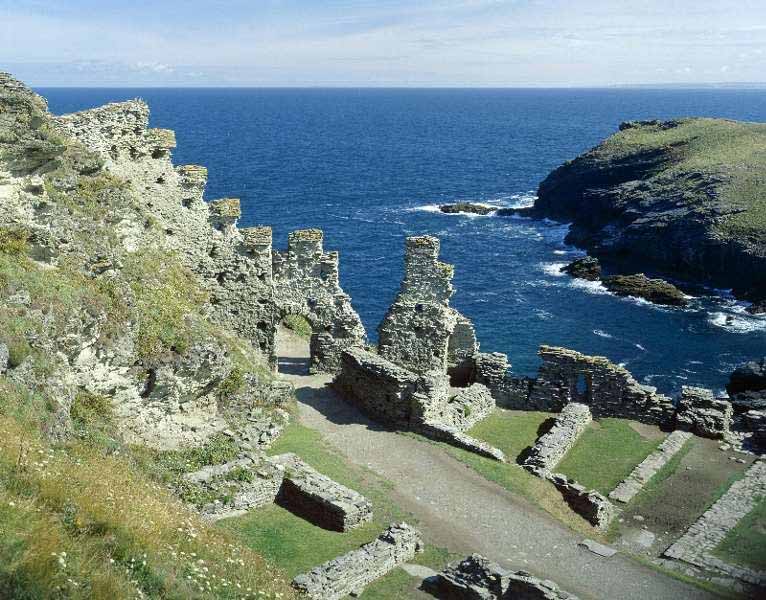

The talk concentrated on the time period of Post Roman/Celtic Britain and our speaker early on asked the question, whether the art defined the people living in Britain at this time? In the 4th or very early 5th Century coins had been found in the last occupation layers. Bronze hair pins were also found and pottery was used and repaired until it finally broke. Fifty Roman towns continued in some capacity. The Anglo-Saxons made copies of 1st Century Roman brooches; Wroxeter was re-built in timber.
In Wales it is difficult to find settlements and the evidence is mainly from high status, defended sites, i.e. hillforts. From AD700-1100 Wales was aceramic. The Dinas Powys hillfort was excavated by Leslie Alcock 1954-58, who discovered a first phase of earthworks and Iron Age finds, but no structures. The second phase had Iron Age earthworks and the Normans had also occupied it. It is an early Medieval site with metal working, jewellery making and objects of smything, moulds, combs, querns, whetstones and jet bracelets. A 5-7th Century phase showed Anglo-Saxon glass and glass beads probably from a craftman’s workshop.
Excavation of the Llangorse crannog, Brecon Beacons, revealed an artificial platform with timber revetting and a causeway to the shore. Finds include a bone comb, cereals and patterned woven cloth. It was a royal residence.
Offa’s Dyke is dated to 5-7th Century, but much is un-excavated. There is Christian evidence with 5-6th Century Latin inscriptions on standing stones, which include the Chi Rho.
At Whithorn Priory, there are timber structures associated with an early Christian cemetery. At Iona there are timber structures. Huge silver chains have been found between the Antonine Wall and Hadrian’s Wall with Pictish symbols on them. The Picts appear in AD297 and were a hostile force towards the Romans. They raided south until they reached Anglo-Saxon settlements. Associated with the Picts are brochs and souterrains.
Dating the brochs has always been problematic, approximately 200-300BC. The Picts have symbol stones mainly on the east coast and this is seen on metal work. The symbol stones can be grouped into three classes: Class 1 – sometimes with Ogham inscriptions; Class 2 – more highly decorated and often a cross on the other side; Class 3 – free-standing stones with no crosses dated to AD750.
Ogham is dated to 3rd – 4th Century and was inspired by the Roman alphabet (20 letters) and used into the later Middle Ages in Ireland. It is read from the top to the bottom. Some stones have Latin inscriptions and are also known in Cornwall and Devon.
Other early evidence includes Philip Rahtz’s excavation of Glastonbury Tor; 6th Century pottery from Gwithian with metal working. At Tintagel large quantities of imported pottery were found. Ralegh Radford interpreted Tintagel as a Celtic monastery. However, evidence of fire meant a revision of Ralegh Radford’s theory as it was shown there was evidence of Anglo-Saxon Merovingian glass and metal working. Contentious is the slab with “Arthur was here” (Artognot). It was however, a 5-7th Century centre of trade with tin being exported from Tintagel.
To sum up, there is a growing body of evidence in the 5-6th Centuries for the use of Roman settlement; by 5-7th Centuries there was the growth and spread of Christianity as well as fortified sites. By the 6-7th Centuries there was a rise of kingdoms with strong contacts with the Mediterranean and Western Europe.
(Image of Tintagel copyright English Heritage)
